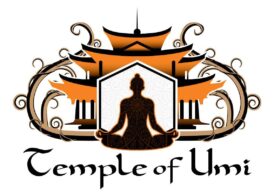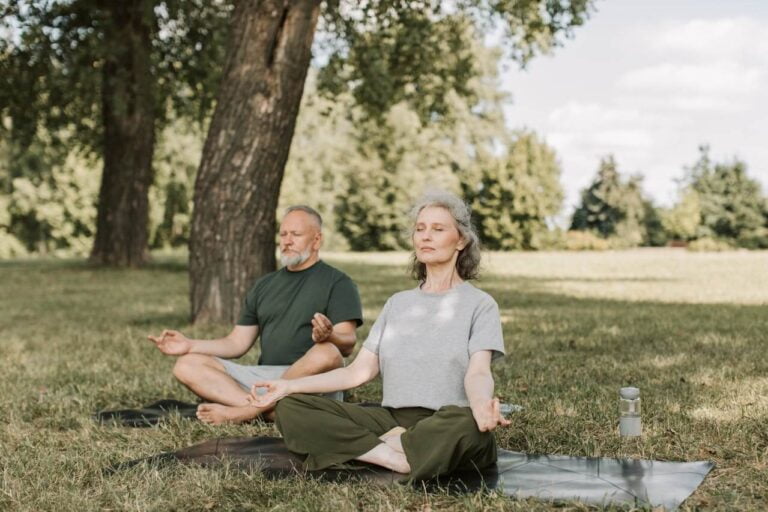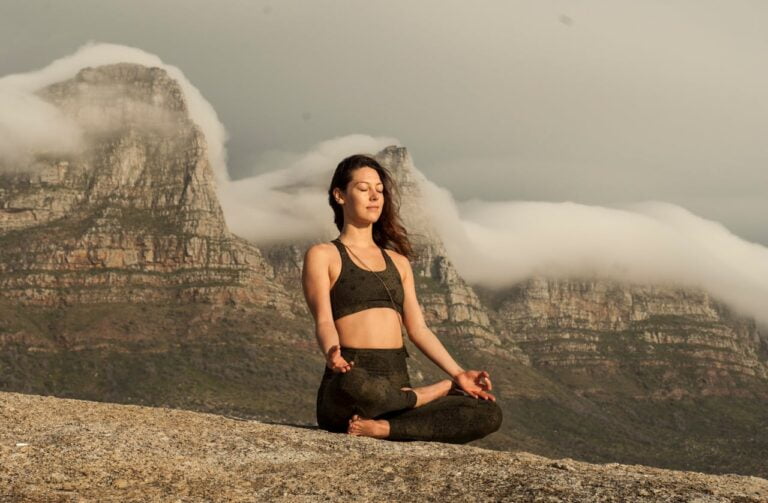Silent Meditation Retreats

By Temple of Umi

Table of Contents
Embrace the transformative power of silence with insights from silent meditation retreats. Find inner peace by reflecting on your experience, establishing post-retreat routines, and sustaining meditation practice beyond the retreat.
Introduction to Silent Meditation Retreats
Defining Silent Meditation Retreats:
- Silent meditation retreats are immersive experiences where participants engage in various meditation practices while maintaining silence.
- These retreats typically last from a few days to several weeks and provide a supportive environment for deepening meditation practice.
The Growing Popularity of Silent Meditation Retreats:
- In recent years, silent meditation retreats have seen a surge in popularity, with more individuals seeking refuge from the demands of modern life.
- The increasing interest in mindfulness and mental wellness has increased attendance at these retreats.
- Silent meditation retreats offer a unique opportunity to disconnect from technology, reconnect with oneself, and cultivate inner peace.
Benefits of Silent Meditation Retreats:
- Silent meditation retreats provide a space for profound introspection and self-discovery.
- After attending a retreat, participants often report reduced stress, improved focus, and a heightened sense of clarity.
- These retreats offer a chance to develop a deeper understanding of meditation techniques and enhance one’s spiritual journey. Learn more.

Finding the Right Silent Meditation Retreat
Researching Available Retreats:
- Start by researching different silent meditation retreats online or through word-of-mouth recommendations.
- Look for retreats that align with your meditation goals, whether mindfulness, compassion, or spiritual growth.
- Read reviews and testimonials from past participants to gain insights into the quality and atmosphere of the retreat.
Considering Location and Setting:
- Consider the location and setting of the retreat, as it can significantly impact your overall experience.
- Choose a serene and peaceful environment conducive to meditation, such as a secluded retreat center or natural surroundings.
- Consider factors like climate, accessibility, and amenities when selecting a retreat location.
Evaluating Retreat Duration and Schedule:
- Determine the retreat duration that fits your schedule and comfort level, whether it’s a weekend getaway or an extended retreat.
- Review the daily schedule of activities, including meditation sessions, teachings, and free time, to ensure it aligns with your preferences and needs.
- Consider any commitments or responsibilities during the retreat and plan accordingly.
Preparation for a Silent Meditation Retreat
Mental and Emotional Readiness:
- Prepare yourself mentally and emotionally for the silent meditation retreat by setting realistic expectations and intentions.
- Reflect on your motivations for attending the retreat and be open to the possibility of facing challenges and emotions during the silent period.
- Cultivate a curiosity, acceptance, and self-compassion mindset as you embark on this transformative journey.
Packing Essentials for a Retreat:
- Pack essential items for your silent meditation retreat, including comfortable clothing for sitting meditation, layers for varying temperatures, and meditation cushions or props.
- Bring any personal items or medication you may need during the retreat and a journal for reflection and note-taking.
- Consider leaving behind distractions such as electronic devices and unnecessary belongings to immerse yourself in the retreat experience fully. Learn more.
Setting Intentions and Goals:
- Take time to clarify your intentions and goals for the silent meditation retreat, whether deepening your meditation practice, finding inner peace, or gaining clarity on a specific issue.
- Please write down your intentions and revisit them throughout the retreat to stay focused and aligned with your purpose.
- Remain open to the possibility of unexpected insights and transformations as you embark on this journey of self-discovery.

What to Expect During a Silent Meditation Retreat
Daily Schedule and Structure
- Each day at a silent meditation retreat is carefully structured to provide participants with ample time for meditation, reflection, and rest.
- Typical schedules include early morning meditation sessions and mindful movement practices such as yoga or walking meditation.
- Afternoons often feature periods of free time for personal reflection, journaling, or nature walks.
- Evenings usually include additional meditation sessions or teachings to deepen participants’ understanding and practice.
Types of Meditation Practices Offered
- Silent meditation retreats may offer a variety of meditation techniques to suit different preferences and experience levels.
- Standard meditation practices include mindfulness, loving-kindness (Metta), breath awareness, and body scan meditation.
- Some retreats may incorporate guided meditation sessions led by experienced instructors to help participants deepen their practice and focus their minds.
- Participants are encouraged to explore different techniques and find what resonates most with them during the retreat.
Guidance and Support from Instructors
- Instructors play a crucial role in guiding and supporting participants throughout the silent meditation retreat.
- They offer teachings on meditation techniques, mindfulness practices, and Buddhist principles to deepen participants’ understanding.
- Instructors are available for one-on-one guidance and support, allowing participants to ask questions, share experiences, and receive personalized advice.
- Their presence helps create a supportive and nurturing environment where participants can feel safe to explore their inner experiences.
Navigating Challenges During a Silent Meditation Retreat
Dealing with Physical Discomfort
- It’s common for participants to experience physical discomfort during a silent meditation retreat, especially if they’re sitting for extended periods.
- Techniques such as mindful movement, stretching, and adjusting posture can help alleviate discomfort and prevent stiffness.
- Participants are encouraged to listen to their bodies and take breaks as needed, whether standing up, walking, or using props like cushions or chairs for support.
- By approaching physical discomfort with mindfulness and compassion, participants can cultivate a greater sense of ease and relaxation in their bodies.
Managing Mental Obstacles
- Silent meditation retreats can bring up various mental obstacles, such as restlessness, boredom, or resistance to meditation.
- Participants are taught to observe these mental states with mindfulness, acknowledging them without judgment and allowing them to pass.
- Techniques like breath awareness and loving-kindness meditation can help calm the mind and cultivate positive mental states.
- Instructors offer guidance on working with common mental obstacles and encourage participants to develop patience and resilience in their practice. Learn more.
Coping with Emotional Releases
- The silence and stillness of a meditation retreat can sometimes lead to the surfacing of intense emotions or unresolved issues.
- Participants are encouraged to approach these emotional releases with mindfulness and compassion, allowing them to arise and pass without getting caught up in them.
- Instructors provide support and guidance for processing difficult emotions, offering tools such as self-compassion practices and mindful inquiry.
- Group discussions or individual meetings with instructors allow participants to explore and share their emotional experiences in a supportive environment. Learn more.

Post-Retreat Integration and Continued Practice
Reflecting on Retreat Experience:
- Journaling: Encourage participants to journal their thoughts, emotions, and insights gained during the retreat.
- Group Discussions: Facilitate group discussions where attendees can share their experiences and learn from each other.
- Guided Reflection: Provide guided reflection sessions to help participants delve deeper into their retreat experience and its significance.
Establishing a Post-Retreat Routine:
- Morning Meditation: Encourage participants to continue their practice by incorporating morning meditation sessions into their daily routine.
- Mindful Activities: Suggest daily mindful activities such as mindful walking, eating, or breathing exercises.
- Setting Intentions: Encourage participants to set intentions for their day, aligning with the insights gained during the retreat.
Sustaining Meditation Practice Beyond the Retreat:
- Online Resources: Provide access to online meditation resources, such as guided meditation apps or virtual meditation groups, to support continued practice.
- Community Support: Facilitate connections between retreat attendees to create a supportive community for ongoing meditation practice.
- Regular Check-Ins: Offer periodic check-ins or follow-up sessions to provide guidance, encouragement, and accountability for sustaining meditation practice.
Conclusion: Embracing Silence, Finding Inner Peace
In conclusion, embracing silence through silent meditation retreats is not just about the experience but extends into post-retreat integration and continued practice. Participants can deepen their connection with inner peace and mindfulness by reflecting on the retreat experience, establishing a post-retreat routine, and sustaining meditation practice beyond the retreat. We open ourselves to profound insights, self-discovery, and a greater sense of inner calm as we embrace silence. May silent meditation lead us all towards a life filled with harmony, clarity, and profound peace.
- What is Ayahuasca?
- Where to get Ayahuasca in the USA
- Top Ayahuasca retreats in the USA. Learn more.
- Cost of Ayahuasca Retreat: Balancing Cost and Experience. Learn more.
- What is trauma bonding?
- A Journey into the Healing Properties of Psychedelic Mushrooms. Learn more.
- Ayahuasca Retreat Georgia – Experience Spiritual Awakening
- Spiritual Retreats Georgia
- Shaman in America Exploration
- Shamanism – Shamanic healing
- Sacred Plant Medicine Retreats in Georgia
- 5 Ayahuasca Retreats in California Worth Exploring
- 7 Best Aya Retreats in America. Click here.
- Mcdonough Ayahuasca retreat
- Conley Ayahuasca retreat
- Whitesburg Ayahuasca retreat
- Brooks Ayahuasca retreat
- Gay Ayahuasca retreat
- Williamson Ayahuasca retreat
- Orchard Hill Ayahuasca retreat
- Glenn Ayahuasca retreat
- Luthersville Ayahuasca retreat
- Shady Dale Ayahuasca retreat
- Bowdon Junction Ayahuasca retreat
- Sargent Ayahuasca retreat
- Greenville Ayahuasca retreat
- Lovejoy Ayahuasca retreat
- Winston Ayahuasca retreat
- Rutledge Ayahuasca retreat
- Moreland Ayahuasca retreat
- Molena Ayahuasca retreat
- Lebanon Ayahuasca retreat
- Good Hope Ayahuasca retreat
- Haralson Ayahuasca retreat
- An Inclusive List of Psychedelic Quotes
- Mount Ayahuasca retreat
- Grantville Ayahuasca retreat
- Pine Lake Retreat near
- Rydal Ayahuasca retreat
- Porterdale Ayahuasca retreat
- Waco Ayahuasca retreat
- Temple Ayahuasca retreat
- Bethlehem Ayahuasca retreat
- Jenkinsburg Ayahuasca retreat
- Adairsville Ayahuasca retreat
- Red Oak Ayahuasca retreat
- Woodbury Ayahuasca retreat
- Cassville Ayahuasca retreat
- Redan Ayahuasca retreat
- North Decatur Ayahuasca retreat
- Grantville Ayahuasca retreat
- Hillsboro Ayahuasca retreat
- Jackson Ayahuasca retreat
- Braselton Ayahuasca retreat
- Zebulon Ayahuasca retreat
- Flovilla Ayahuasca retreat
- Auburn Ayahuasca retreat
- Warm Springs Ayahuasca retreat
- Scottdale Ayahuasca retreat
- Lithia Springs Ayahuasca retreat
- Villa Rica Ayahuasca retreat
- Grayson Ayahuasca retreat
- Sunny Side Ayahuasca retreat
- Senoia Ayahuasca retreat
- Locust Grove Ayahuasca retreat
- Chamblee Ayahuasca retreat
- Fairburn Ayahuasca retreat
- Snellville Ayahuasca retreat
- Monticello Ayahuasca retreat
- Union City Ayahuasca retreat
- Tallapoosa Ayahuasca retreat
- Bremen Ayahuasca retreat
- Hampton Ayahuasca retreat
- Monroe Ayahuasca retreat
- Marble Hill Ayahuasca retreat
- Madison Ayahuasca retreat
- Dawsonville Ayahuasca retreat
- Felton Ayahuasca retreat
- Concord Ayahuasca retreat
- Mansfield Ayahuasca retreat
- Taylorsville Ayahuasca retreat
- Roopville Ayahuasca retreat
- Turin Ayahuasca retreat
- Franklin Ayahuasca retreat
- Clarkdale Ayahuasca retreat
- Talking Rock Ayahuasca retreat
- Jersey Ayahuasca retreat
- Kingston Ayahuasca retreat
- Bostwick Ayahuasca retreat
- North Metro Ayahuasca retreat
- Meansville Ayahuasca retreat
- Social Circle Ayahuasca retreat
- White Ayahuasca retreat
- Rhode Island Ayahuasca retreat
- Maryland Ayahuasca retreat
- Delaware Ayahuasca retreat
- New Jersey Ayahuasca retreat
- Connecticut Ayahuasca retreat
- Massachusetts Ayahuasca retreat
- Hampshire Ayahuasca retreat
- Pennsylvania Ayahuasca retreat
- New York Ayahuasca retreat
- Florida Ayahuasca retreat
- South Carolina Ayahuasca Retreat
- North Carolina Ayahuasca Retreat
- West West Virginia Ayahuasca retreat
- Virginia Ayahuasca retreat
- Ohio Ayahuasca retreat
- Alabama Ayahuasca retreat
- Mississippi Ayahuasca retreat
- Tennessee Ayahuasca retreat
- Kentucky Ayahuasca retreat
- IndianaAyahuasca retreat
- ILLINOIS Ayahuasca retreat
- Missouri Ayahuasca retreat
- Arkansas Ayahuasca retreat
- Louisiana Ayahuasca retreat
- Texas Ayahuasca retreat
- Oklahoma Ayahuasca retreat
- KansasAyahuasca retreat
- Ayahuasca retreats near me in Experiment.
- A wellness retreat in Georgia
- What is Ayahuasca?
- Embark on a Journey of Transformation with Spiritual Healing
- Unveiling Healing Energy at the Temple of Umi
- 10 Energy Healing Techniques to Transform Your Life
- Where to get Ayahuasca in the USA
- Top Ayahuasca retreats in the USA. Learn more.
- Cost of Ayahuasca Retreat: Balancing Cost and Experience. Learn more.
- What is trauma bonding?
- A Journey into the Healing Properties of Psychedelic Mushrooms. Learn more.
- Ayahuasca Retreat Georgia – Experience Spiritual Awakening
- Spiritual Retreats Georgia
- Shaman in America Exploration
- Shamanism – Shamanic healing
- Shaman Healing Guide
- Ayahuasca ceremonies Ayahuasca ceremonies near you in the USA
- Ayahuasca Experience
- DMT Journey, Benefits, and Side Effects
- Iowaska – What is it?
- Plant medicine retreats in Georgia
- Why massage is beneficial, according to a cardiologist.
- Are mushrooms truffles – What Is a Truffle?
- 11 Best Ayahuasca Retreats in the USA for Spiritual Healing
- What is Rapé?
- What is a Tincture?
- Where to find Ayahuasca near me
- Healing retreats USA
- Best Retreats USA









